Which wine museum in Bordeaux should you visit?
When I did some quick research before visiting Bordeaux, I saw two wine museums listed: the Musée du Vin et du Négoce de Bordeaux (Bordeaux Wine and Trade Museum) and the Cité du Vin (City of Wine). Both sounded interesting, though the Musée sounded like the more traditional of the two, while the Cité is newer and flashier.
So, seeing a useful angle, I decided to visit both, so I could help you decide which to see.
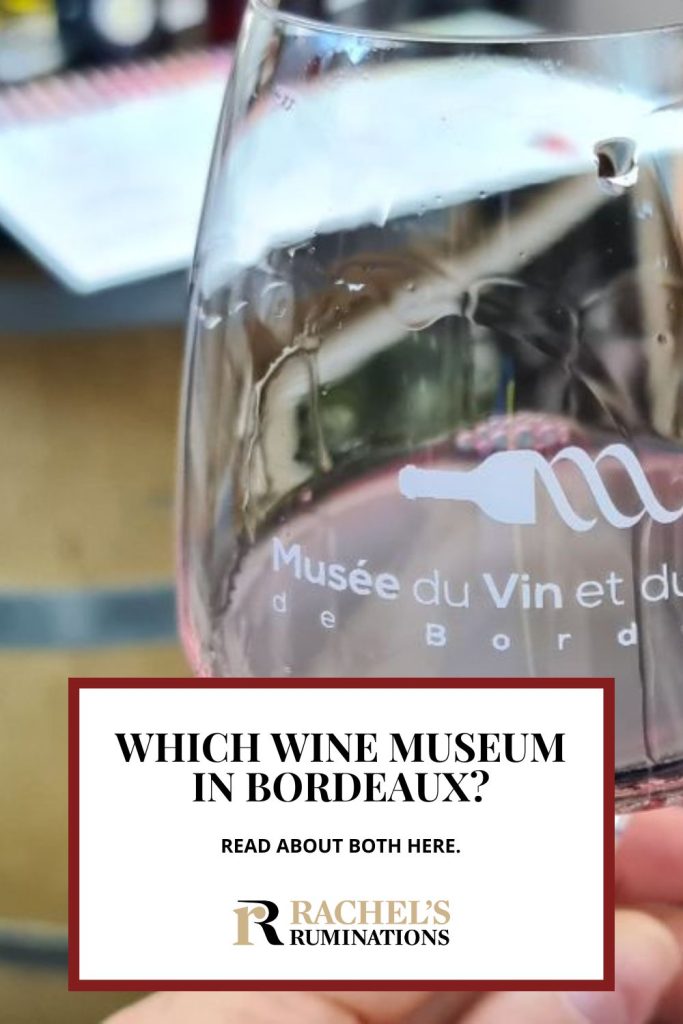
Musée du Vin et du Négoce de Bordeaux
I visited this one first because it was already afternoon and the Cité has a later closing time.
The building
The building seems pretty underwhelming at first sight: just one of a row of low-rise buildings along a narrow street in the rain. I wouldn’t have even noticed it without the signs that blocked the sidewalk. It showed its former elegance, though, with its arched windows and detailed iron balcony.
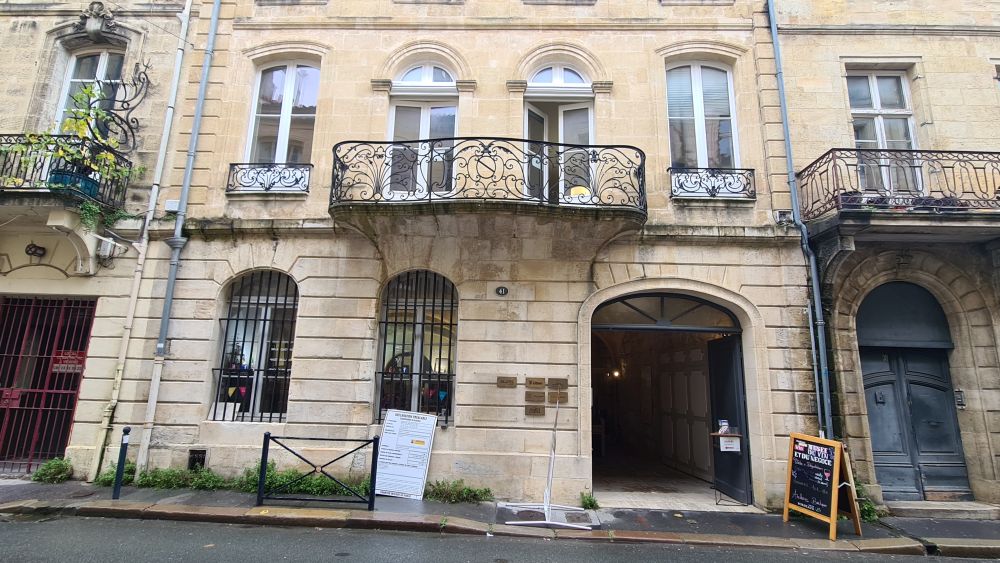
On entering, I learned that the building dates to the 18th century, once housing a wine broker. Essentially there were originally three buildings here. The front one, on the street, was the family residence, but also was intended to make an impression commercially. So the front room, where the shop and reception are now, was the cooperage, where the broker did business. The stairway in the center of the house gives an additonal hint at the house’s former glory, with its elegant curves and decorative iron bannisters.
Disclosure: This article contains affiliate links. Any purchases made through these links earn a commission for this website. This will not affect your price.
The museum
Unfortunately, the museum doesn’t include any more of the house. Originally two separate sections of the building behind the front house encompassed the business itself – bottling and labeling of the wine, for example, but none of that is included in the museum. I think what’s left is now apartments, but I’m not sure.
The museum, then, is in the basement. But this isn’t just any basement. It’s a wine cellar, made up of two long, arched, stone spaces where barrels of wine were stored. The displays along the walls take the visitor through a very specific history: Bordeaux wine. It starts with the development of the port of Bordeaux over time and how the wine was exported from the region to the rest of Europe.
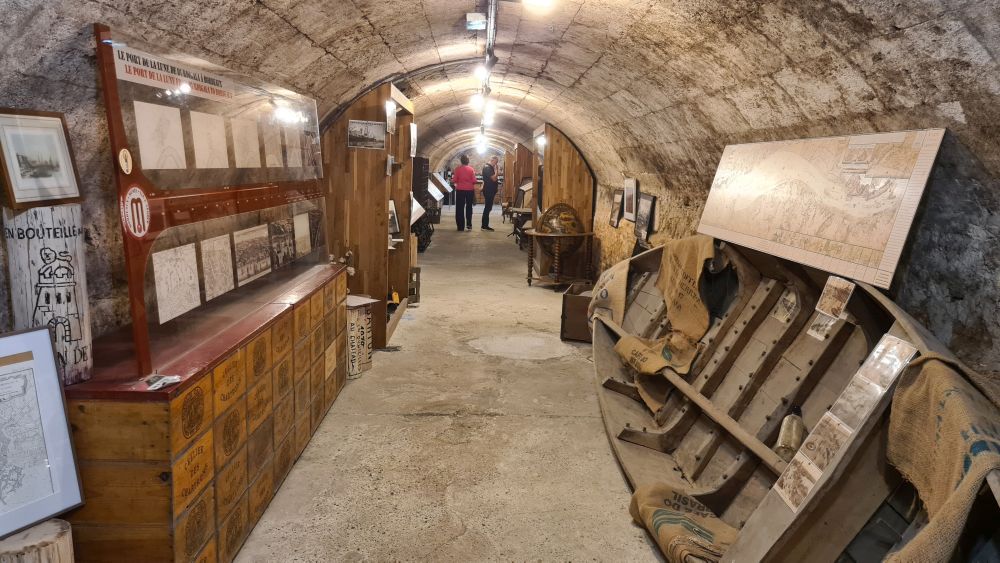
It covers the rise of specific “chateaux” and their different wines, bottles and labels. One section looks at barrels and how they are made. Another at how wines mature and the processes that went into the development of bottling. You’ll learn about different types of wine – estate, trade or branded – and different classifications. This is just a sampling: it’s a lot of information in a small space.
Most of the information, though, is presented in a very static way: informational signs and maps, with objects in cases or sitting on the floor. There’s nothing interactive here. The exhibits are labeled in French, only sometimes translated into English. The binder handed to me at reception, however, translated pretty much every informational sign into English.
Wine tasting
After the tour, visitors take part in a wine-tasting session that includes two tastes. With a small group of other English-speakers, I sat on a high stool in a semi-circle. A staff member used a map to point out the different soil compositions in the Bordeaux region and explained how that affects the wine each region produces. We tasted a claret and a medoc. We also tasted cannelle, a local Bordeaux cinnamon cake, and chocolate-covered raisins that used wine grapes: a delicious combination.

Musée du Vin et du Négoce: 41 rue Borie, Bordeaux. Take tram B to the Chartrons stop or Tram C to the Camille Godard stop. Open daily 10:00-18:00. Admission €10, which includes 2 tastes. Website.
Cité du Vin
It took me about a half-hour to walk between the two wine museums, slightly wine-fueled because I drink quite rarely. Just seeing the Cité du Vin building was enough to tell me this would be quite different. I have no idea what the shape of this structure might represent. It looked a bit like a giant slug to me, or a curled-up worm.
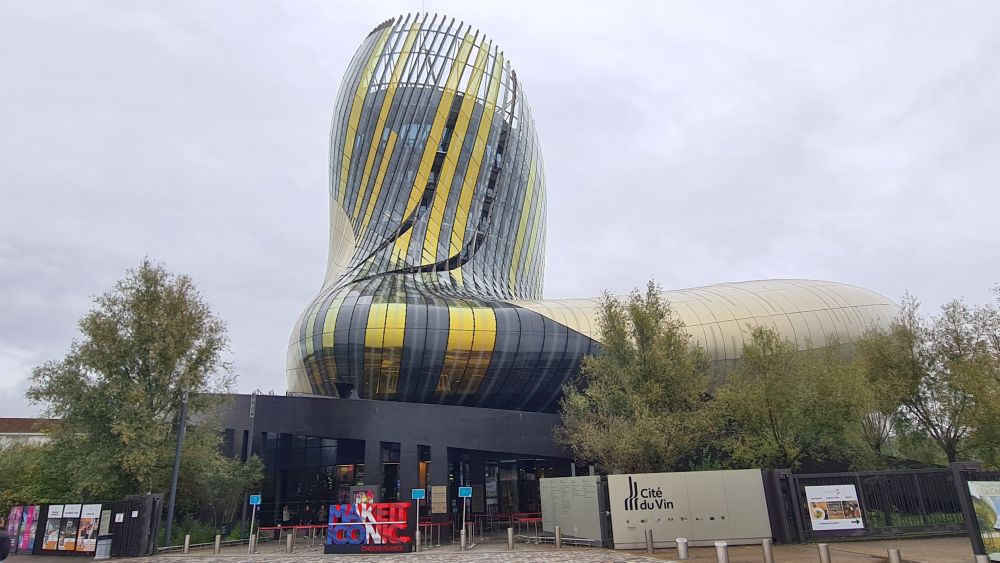
Inside the museum
Anyway, on paying admission on the ground floor and receiving headphones and a mobile audio device – included in the price – I went to the permanent exhibition that starts on the 2nd floor (3rd floor for you Americans). The spaces are big and windowless and the walls are all sorts of curvy and dramatic. So is the lighting.
This place is the polar opposite of the Musée du Vin et du Négoce. While it does include pretty much all the information the Musée du Vin et du Négoce includes, it’s more a museum of wine and winemaking in general than specifically about Bordeaux. For instance, in the first room of the 2nd-floor exhibition, visitors view a short film about wine culture around the world, all of it filmed from, presumably, drones. Hopping around the world, the film emphasizes how in each place the wine growers adapt their growing techniques to local conditions, and those adaptation are evident in how their vineyards look. It’s a pretty start to a visit.
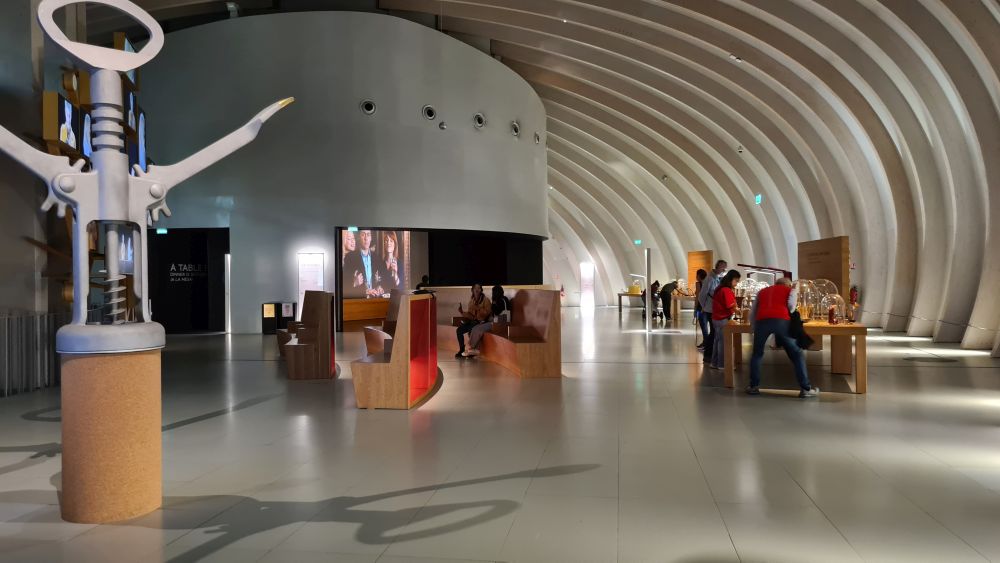
At each item or location in the museum, the audio explanation – always quite short – is activated when you touch your audio device to a symbol. It works very easily and seamlessly.
Learning about the history of wine
The history of wine section starts with Mesopotamia, and you move through a series of rooms, each addressing a different time period in history. The rooms all have amusing little dioramas with ghostly little people illustrating whatever point is being made. In the Ancient Egypt room, for example, the paintings on a tomb wall illustrate how the Egyptians produced their wine. They move, and a stonemason working on a wall keeps trying to catch them moving. The only other place I’ve ever seen this mix of set and film was at the Canal House Museum in Amsterdam. It’s absolutely charming. The audio clips that go with each image or diorama are all very short – less than a minute – which kept me moving happily through the rooms.
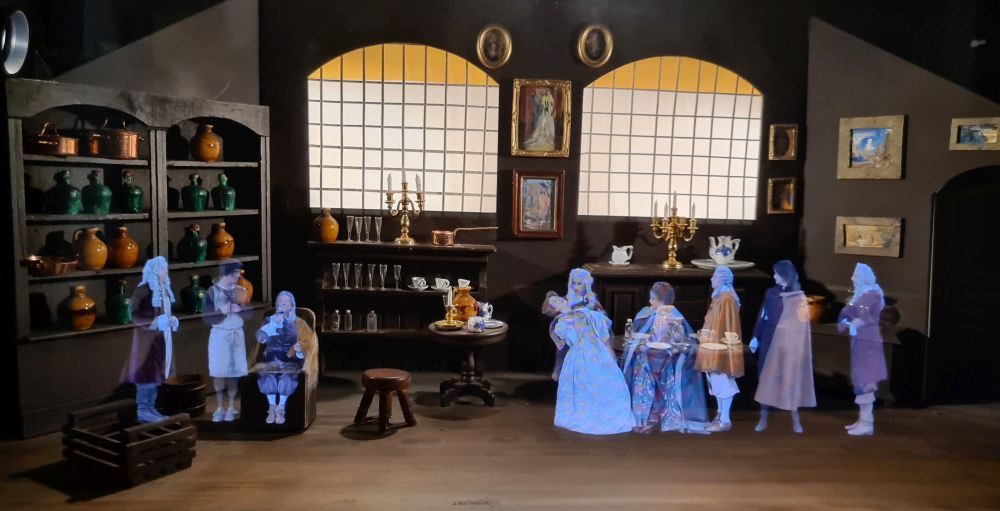
Interactive features
There are plenty of opportunities to sit and watch short films. As an example, one film assembles scenes from movies showing people talking over a glass of wine. Elsewhere, a touch screen allows you to choose parts of the face – mouth, tongue, nose – and understand what happens when the person pictured (a Renaissance painting) takes a sip of wine. In one room is an installation of a dinner party. Visitors sit around a table as images project onto the walls and the table itself. The sound effects suggest time spent with friends and family, and the words echo the sorts of words that are used to describe how wines taste. Presumably the other visitors sitting along the long table heard the same words in their own languages through their audio devices.
See my other content about places in France.
My favorite part, I think, is on the third floor: a section that allows visitors to think about wines in a very interactive way. I was instructed (through the audio) to smell scents, then to identify what I was smelling. In the same section, a screen gave me a list of colors used to describe wines – bright pink, for example, and brick red – and had me try to match them to lighted cylinders of a range of colors. Another allowed me to answer a series of questions where I had to choose my favorite of three items – three colors were shown, three meals, etc. From my answers, it decided what wine I am. I’m a very dry white cabernet sauvignon, apparently. There were many more such interactive exhibits – we didn’t try them all.
Wine tasting
I could have spent a lot more time at this museum. We – my husband joined me for this one – ended up skipping parts of it because the museum was closing. We finished by turning in our audio guides and heading for the top floor. In a tasting room there we could each choose one wine. I had a Pays d’Oc that I loved. Albert’s was a local Medoc, but I didn’t like it as much. While we drank, we could admire the views over the river and the city of Bordeaux, though it was a wet and miserable day, so the view wasn’t great.
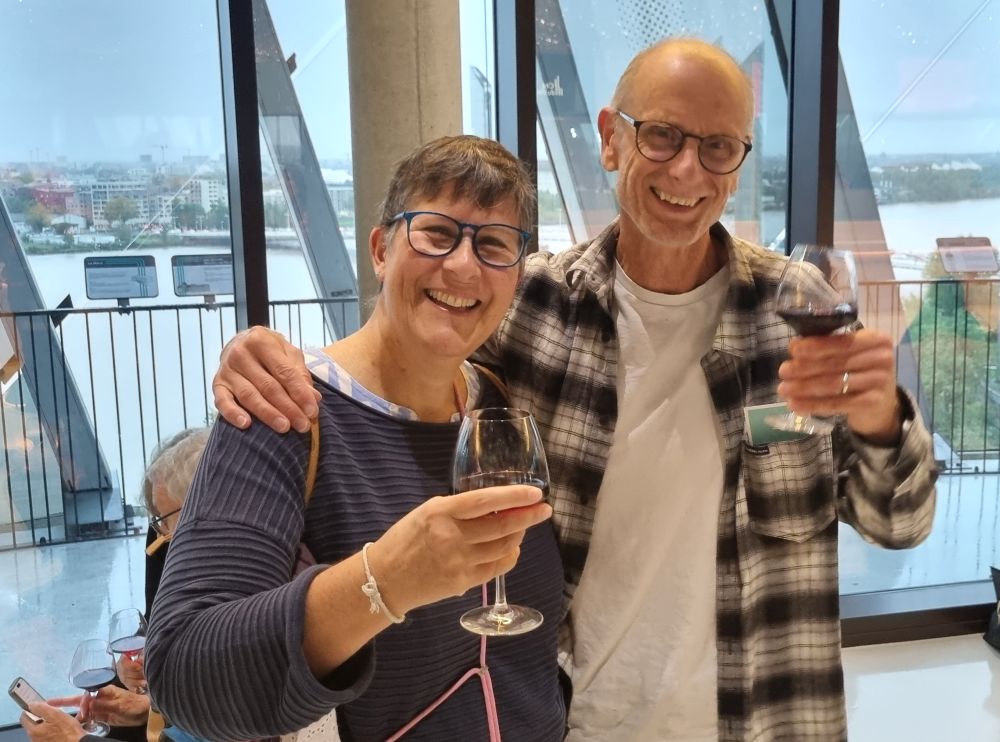
Cité du Vin: 134 Quai de Bacalan, Bordeaux. Take Tram B to the Cite du Vin stop. Open daily mid-March to early November 10:00-19:00; from early November to mid-March open daily 10:00-18:00 but open until 19:00 on Saturdays and holidays. Admission €22, which includes one glass of wine. Website. Buy your ticket here.
So which Bordeaux wine museum will you choose?
If you can only go to one, make it the Cité du Vin. It’s immersive at times, but almost always interactive and all sorts of whizzy. For a person like me who wants to go to museums but can’t focus for long, this worked really well.
If you wish to learn much more specifically about Bordeaux wines and this city’s commercial growth as a wine center, perhaps you’d like the Musée du Vin et du Négoce better. It’s good for people who have the patience to take in longer pieces of information. It also feels more personal. The young man I bought my ticket from was very helpful and friendly. At the Cité du Vin it was a typical big-city museum reception – just doing my job, ma’am.
If you go to the Cité du Vin and find the Bordeaux section particularly interesting, then go visit the Musée du Vin et du Négoce after that. It’ll give you more details to fill out that knowledge.
I feel a bit bad saying all this, since I generally like small, quirky, homegrown museums and want to encourage them, but these two are such polar opposites that it’s really no contest.
Looking to stay in Bordeaux for a few days? Use the map below to find accommodations:
Tips for visiting either wine museum in Bordeaux
The Musée du Vin et du Négoce will only take about an hour. That includes your wine tasting, unless you want to read absolutely everything, in which case put aside two hours. As for the Cité, we had a bit more than two hours and it wasn’t enough. Set aside at least three, maybe more.
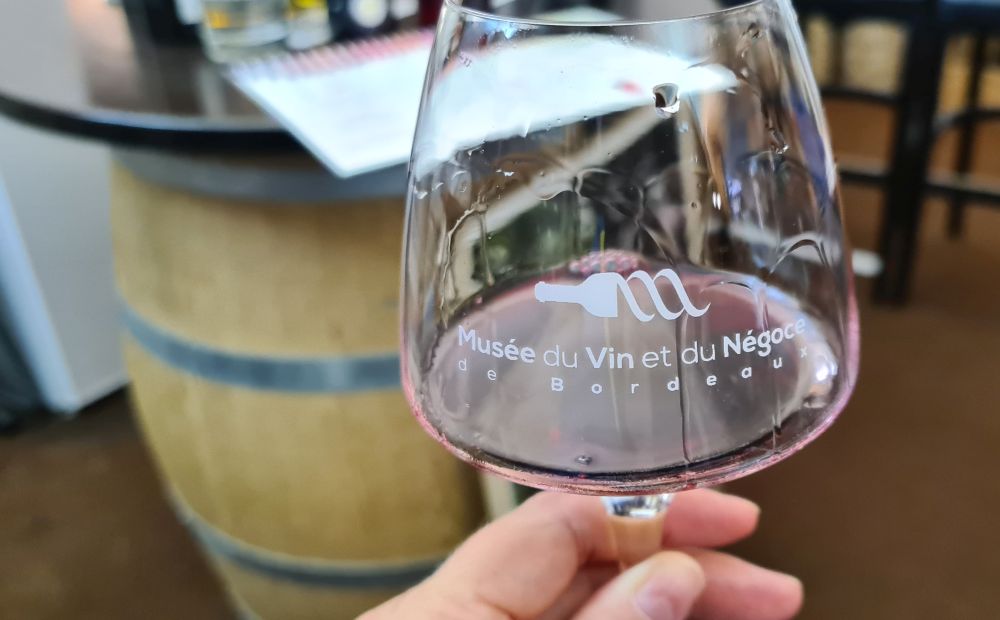
I’d suggest you don’t drive to either one. They’re both in busy parts of the city and the driving is slow. More importantly, when they talk about wine tasting, they mean more than just a taste. The included two tastes at the Musée du Vin et du Négoce were each almost half a glass. And the “taste” at the Cité du Vin was a whole glass. In both places you can pay for more tastes, which would be fun, assuming you’re not driving.
If you want more tastes, take a tour! This half-day tour to the St-Emilion region has great ratings, as does this Medoc and St-Emilion full-day tour.
At the Cité du Vin you can also sign up for a one-hour tasting workshop to learn the art of wine tasting. It includes three “tastes.” They also offer a “Sensory tasting journey.” This seems to be a combination of immersive art and tasting four different wines.
Likewise, the Musée du Vin et du Négoce offers workshops, and in this case they only include wine from Bordeaux. Their one-hour workshop is an introduction to wine tasting and involves four different “tastes.” Their two-hour version involves much more information about Bordeaux’s wines, their appellations, classifications, soils, and so on, as well as “tastes” of five Bordeaux wines. A one-and-a-half-hour workshop combines chocolate and wine and includes four wine “tastes” and five chocolates from a local bean-to-bar chocolatier.
As far as I could tell, the Musée du Vin et du Négoce is not wheelchair-accessible, involving a stairway down to the wine cellars. If there is an elevator, I didn’t see it, and the fact that their website doesn’t mention accessibility implies there isn’t any. On the other hand, the Cité du Vin is completely wheelchair-accessible, though some of the interactive displays might be on the high side.
So which will you visit? Add your comments below!
My travel recommendations
Planning travel
- Skyscanner is where I always start my flight searches.
- Booking.com is the company I use most for finding accommodations. If you prefer, Expedia offers more or less the same.
- Discover Cars offers an easy way to compare prices from all of the major car-rental companies in one place.
- Use Viator or GetYourGuide to find walking tours, day tours, airport pickups, city cards, tickets and whatever else you need at your destination.
- Bookmundi is great when you’re looking for a longer tour of a few days to a few weeks, private or with a group, pretty much anywhere in the world. Lots of different tour companies list their tours here, so you can comparison shop.
- GetTransfer is the place to book your airport-to-hotel transfers (and vice-versa). It’s so reassuring to have this all set up and paid for ahead of time, rather than having to make decisions after a long, tiring flight!
- Buy a GoCity Pass when you’re planning to do a lot of sightseeing on a city trip. It can save you a lot on admissions to museums and other attractions in big cities like New York and Amsterdam.
- Ferryhopper is a convenient way to book ferries ahead of time. They cover ferry bookings in 33 different countries at last count.
Other travel-related items
- It’s really awkward to have to rely on WIFI when you travel overseas. I’ve tried several e-sim cards, and GigSky’s e-sim was the one that was easiest to activate and use. You buy it through their app and activate it when you need it. Use the code RACHEL10 to get a 10% discount!
- Another option I just recently tried for the first time is a portable wifi modem by WifiCandy. It supports up to 8 devices and you just carry it along in your pocket or bag! If you’re traveling with a family or group, it might end up cheaper to use than an e-sim. Use the code RACHELSRUMINATIONS for a 10% discount.
- I’m a fan of SCOTTeVEST’s jackets and vests because when I wear one, I don’t have to carry a handbag. I feel like all my stuff is safer when I travel because it’s in inside pockets close to my body.
- I use ExpressVPN on my phone and laptop when I travel. It keeps me safe from hackers when I use public or hotel wifi.



what drivel…nearly as pointless as a visit to Cite du Vin
On both accounts (the article and the museum), you’re always welcome to provide some constructive criticism!